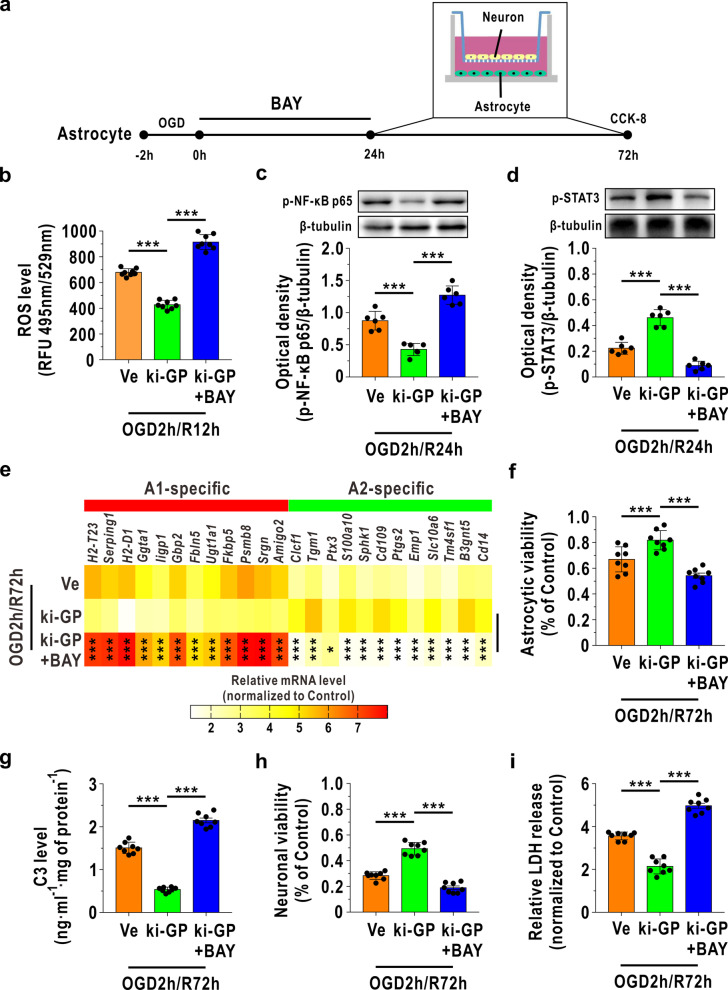Fig. 5.
ROS inducer BAY reversed glycogen mobilization-mediated A1/A2 transformation in cultured astrocytes after OGD/R. a Astrocytes received the OGD challenge for 2 h, and BAY (10 nM) was added to the astrocytic culture medium immediately following reoxygenation for 24 h. Then, astrocytes were cocultured with neurons at 24 h following reoxygenation for 48 h. The neurons also received the OGD challenge for 2 h and cocultured with astrocytes at 24 h following reoxygenation. b Astrocytic ROS levels at 12 h following reoxygenation (n = 8). c, d Protein levels of astrocytic p-NF-κB p65 (c) and p-STAT3 (d) at 24 h following reoxygenation (n = 6), as measured by immunoblotting. e Heat map of relative mRNA levels of 12 target genes of A1-like astrocyte and A2-like astrocyte at 72 h following reoxygenation, determined by RNA sequencing (n = 4). Statistical analysis was calculated between ki-GP group and ki-GP + BAY group using one-way ANOVA followed by LSD post hoc analysis or Dunnett T3 post hoc analysis. f Astrocytic viability at 72 h following OGD/R analyzed by CCK-8 (n = 8). g C3 levels in the astrocyte–neuron coculture medium at 72 h following OGD/R (n = 8). h Cocultured neuronal viability at 72 h following OGD/R, as analyzed by the CCK-8 assay (n = 8). i LDH release in astrocyte–neuron coculture medium at 72 h following OGD/R (n = 8). *P < 0.05, ***P < 0.001. One-way ANOVA followed by LSD post hoc analysis for c, d, f, i. One-way ANOVA followed by Dunnett T3 post hoc analysis for b, g and h

